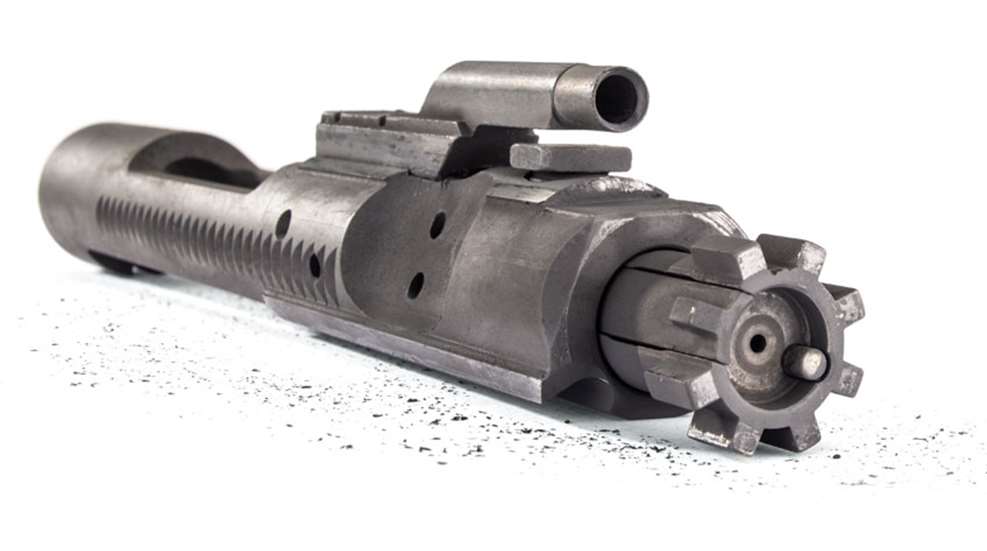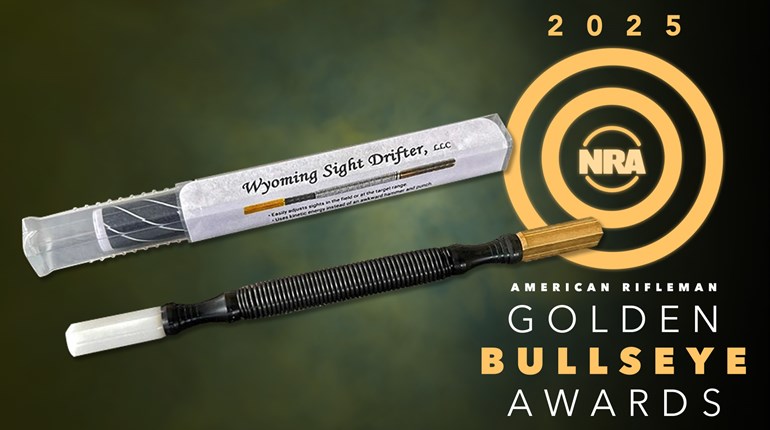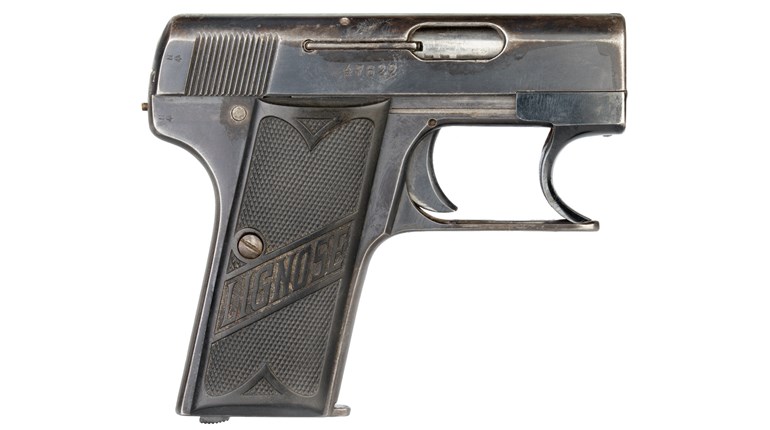
Heavy fouling, such as seen on the AR bolt-carrier group above, are one of many factors that can cause a firearm to malfunction.
While instructing several students how to operate an AR-15-style rifle, it failed to fire several times when the trigger was pulled. Trying to shoot a five-shot string was kind of a hit-and-miss operation at best. Each time the gun failed to fire, the charging handle had to be pulled back vigorously and released to continue firing. It was evident that the hammer had failed to cock even though there was a slight mark on the primer of the ejected cartridges from the firing pin. The firearm in question was a facility-owned, heavy-barreled Colt Sporter model fitted with a direct-attach, screw-on AAC sound suppressor. It should also be noted that the rifle had a drop-in trigger that had been recently purchased and installed.
We experienced several failures to feed just prior to these no-fire incidents and had changed magazines due to heavy fouling from the blowback pressure of the suppressor. The rifle was quite hot and carboned up due to multiple people firing it one after the other. I fired several strings myself after each incident, but could not duplicate the problem. I appreciate any advice you can give as I am concerned this might continue to happen, slow down training or be unsafe.
S. DeVose, via the internet
The answer to your question could be a combination of the conditions you described or possibly in one area alone.
The first place I would look is the replacement trigger. In a training gun, especially if it is to be used by multiple students, I would recommend keeping the trigger factory stock. Aftermarket models, particularly those of “Match-Grade” designation, can be a bit more finicky when subjected to heavy fouling such as you described. Additionally, a certain degree of liability may be incurred by the gun owner when a product is modified with non-standard parts and an incident occurs—especially if safety becomes a concern.
The fact you couldn’t recreate the problem suggests that variables such as heat and heavy fouling are the likely culprits of the gun’s failure—if the trigger can’t be identified as the origin of the problem. The suppressor is a major contributor to both of those issues when used as you had mentioned. I would refer to the suppressor manufacturer’s recommendation as to how many rounds and at what rate of fire this particular model is designed to withstand before cooling and or servicing. Following those guidelines will help to attenuate fouling and heat issues in the suppressor and the platform to which it is attached.
It is important to keep a high-volume rifle well-lubricated to mitigate heat and friction. Lubrication also helps to keep dirt and fouling in a mud-like suspension, allowing it to move to non-critical areas in the gun without causing a stoppage or malfunction. Adding a little lubrication to the moving parts every few magazines is usually good insurance to keep the gun running longer in between servicing. At the end of the firing cycle, a well-lubricated gun is easier to clean than one with little to no lubrication, which is an added benefit to the owner/operator.
The fact that the gun was so dirty that it failed to function properly before the failure to fire, was a clear indicator that it was in dire need of cleaning and/or lubrication to continue firing.
The ejected ammunition, as you described it, sounds normal if the only noticeable marks were a light hit on the primer.
A possibility that shouldn’t be overlooked is the condition of the firing pin itself. If restricted in its movement by firing residue, it could have been prevented from fully protruding through the bolt face, causing the primer to be slightly indented, but not fired as the hammer fell. Disassembly, cleaning and inspection for breakage or damage to the tip of the firing pin is a good idea as part of the cleaning process.
My advice is to return the rifle’s trigger mechanism to factory specifications, shoot known quality factory ammunition through it and service the rifle as well as the suppressor as recommended by the manufacturer. This may not provide a definitive answer to your question as to why the rifle started firing intermittently, but will likely prevent that condition from happening again.






































